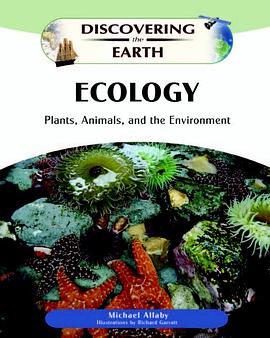Preface ix
Acknowledgments xi
Introduction xii
CHAPTER 1
GILBERT WHITE AND HIS LETTERSTO NATURALISTS 1
The Natural History and Antiquities of Selborne 2
Gilbert White, Naturalist of Selborne 3
Controlling Pests to Improve Crop Yields 7
CHAPTER 2
THE BEGINNING OF CONSERVATION 12
Renewable Resources in Medieval Forests 15
John Evelyn and Forestry 19
George Perkins Marsh and the Consequences of Deforestation 23
National Parks and Wildlife Reserves 27
Henry David Thoreau and Walden 31
Aldo Leopold and Preserving Wilderness 34
The Meaning of the Dust Bowl 36
Public or Private? “The Tragedy of the Commons” 40
CHAPTER 3
THE CHAIN OF BEING 44
John Ray and the Classifi cation of Plants 45
Adaptation and the Great Chain of Being 48
Charles Bonnet (1720–1793), and the Discovery of Parthenogenesis 50
William Derham and the Interdependence of Organisms 52
Linnaeus and Binomial Nomenclature 54
René-Antoine Ferchault de Réaumur (1683–1757), and Experiments with Nature 55
What Is a Species? 61
CHAPTER 4
GEOGRAPHY OF LIVING THINGS 65
Eden, Noah, and Migration 66
Johann Forster, Georg Forster, James Cook, and Voyages of Biological Exploration 69
The Comte de Buff on and Geographic Isolation 74
Karl Willdenow and Plant Distribution 78
Alexander von Humboldt and Aimé Bonpland, Exploring South America 79
CHAPTER 5
CHARLES DARWIN AND HIS “ENTANGLED BANK” 85
Darwin and the Beagle 86
Evolution by Means of Natural Selection 90
Population and Resources 96
Thomas Malthus and An Essay on the Principle of Population 98
Ernst Haeckel and “Oecology,” the Study of the Household 101
How “Oecology” Became “Ecology” 104
Vladimir Vernadsky and the Discovery of the Biosphere 106
James Lovelock and the Physiology of the Earth 108
Gaia Hypothesis 110
G. F. Gause and the Struggle for Existence 112
CHAPTER 6
THE GROWTH OF ECOLOGY 115
Abandoning the “Balance of Nature” 116
Karl Möbius, His Oysters, and the Biocoenosis 118
Stephen Forbes and “The Lake as a Microcosm” 120
François-Alphonse Forel and the Inhabitants of Lac Léman 123
Victor Hensen, Karl Brandt, and Studies of Sea Life 126
CHAPTER 7
SOCIAL ORGANIZATION OF PLANTS 131
Oscar Drude and Plant Communities 132
Josias Braun-Blanquet and Phytosociology 133
The Zurich-Montpellier School 135
Eugenius Warming and the Ecology of Plants 136
CHAPTER 8
AMERICAN ECOLOGY 139
Charles C. Adams and the Survey of Isle Royale 140
Henry Chandler Cowles and the Sand Dunes of Lake Michigan 142
Frederic E. Clements, Plant Succession, and the Superorganism 146
The Climax Concept 149
Henry Allan Gleason and the Individualistic Concept 150
Victor E. Shelford and Animal Communities 152
Robert H. MacArthur and the Testing of Hypotheses 153
Alfred J. Lotka, Vito Volterra, and the Mathematics of Relationships 155
Raymond Lindeman, Energy and Effi ciency 158
The Odum Brothers and Systems Ecology 160
CHAPTER 9
BRITISH ECOLOGY 165
Arthur G. Tansley, Exploring British Plants 166
Charles Elton, Regulating Populations 170
Ecological Pyramids 173
Ronald Aylmer Fisher and the Union of Evolution and Ecology 174
Mendel’s Laws 175
CHAPTER 10
THE RISE OF SOCIOBIOLOGY 178
William D. Hamilton and the Evolution of Behavior 179
Edward O. Wilson and Sociobiology 183
CHAPTER 11
ECOLOGY AND ENVIRONMENTALISM 186
Rachel Carson and Silent Spring 187
The Rise of the Environmentalist Movement 190
The Stockholm Conference and the United Nations Environment Programme 192
Environmental Protection and Reducing Pollution 196
Conclusion 199
· · · · · · (
收起)






















